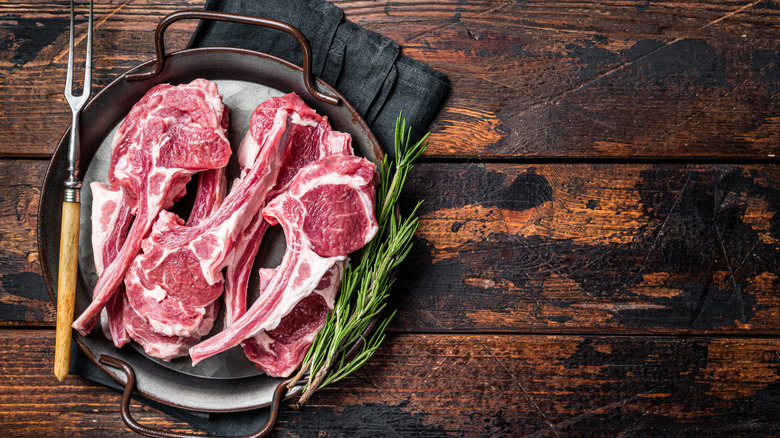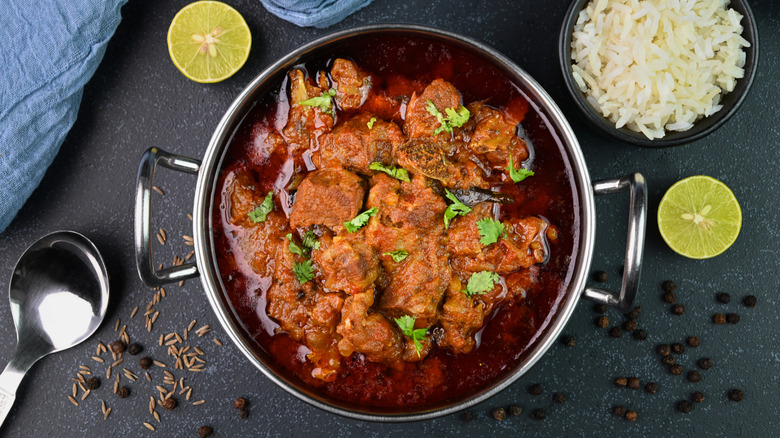Lamb Vs Mutton: What Are The Actual Differences Between These Meats?
In America, consumers sometimes get a bit boggled when faced with cuts of meat that are less familiar than the stalwarts: beef, chicken, and pork. For example, there are plenty of people who don't know what tripe is or how to prepare it. More accessible than tripe, but still foreign to some U.S. foodies are lamb and mutton, which are two names for meat that comes from sheep. Lamb is a classic part of the Easter dinner menu in some cultural traditions and Americans may like eating it in gyros, but we're less likely to know the minutiae of lamb or mutton butchery and where the distinctions lie between these two types of meat. Is the difference mostly semantic (like ham and Canadian bacon, which taste very similar but are cut from different parts of the animal)? Actually, no. Lamb and mutton have quite a few differences in taste, consistency, and uses in cooking.
First of all, let's clarify that both lamb and mutton are considered red meat, just like ham. But, besides that broad classification, lamb and mutton have one important difference. While lamb comes from young sheep, mutton comes from older animals. The age gap affects almost everything about the meat and means you may enjoy one more than the other.
Lamb and mutton come from sheep of different ages
What we know as "lamb" is the meat of a young sheep, generally in the ballpark of a year old. Because these sheep are young, their muscle is not dense or worked, and they have not had the opportunity to develop much fat. The resulting meat is lean, with a sweet taste and aroma from the lambs' grassy diet. Lamb meat is good for grilling or braising. "Spring lamb" is younger still, topping out around three months, and has an even more tender mouthfeel. On the whole, lamb is more expensive and generally more sought-after than mutton.
Mutton comes from older sheep that have tougher muscle fibers and more subcutaneous fat. Accordingly, this meat benefits from a longer, slower cooking method, such as stewing or slow-roasting, to break it down and avoid stringiness. In India and the Middle East, mutton is popular in slow-cooked curries. Interestingly, mutton has a more pronounced, gamey taste that many uninitiated consumers tend to dislike — one reason that it fell out of popularity in the U.S. The raw meat even has a more pronounced smell. Just to muddle the waters further, South Asian and Caribbean cooks may use the term "mutton" when talking about goat meat.
When buying meat from sheep, a bit of research is your friend. Distinguishing lamb from mutton will inform how you buy and cook your dinner, and can help you enjoy your purchase to its full potential.

